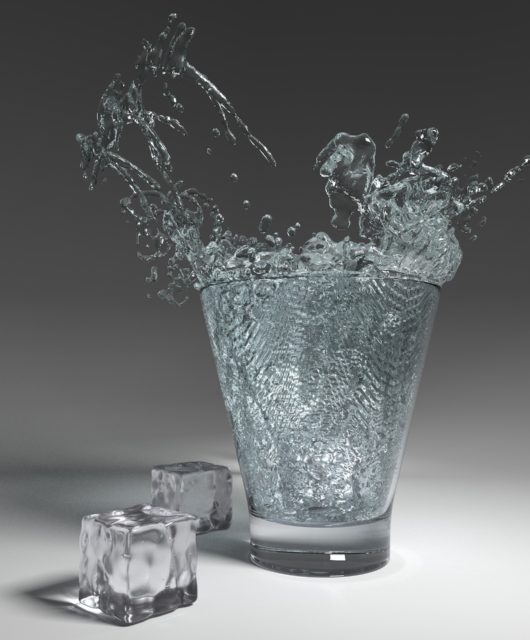5 Signs of Irritation, and How a Hypoallergenic Mask Can Help

As of July 14, 2020, the CDC recommends we wear face masks to stall the spread of COVID-19.
At the time, CDC Director Dr. Robert R. Redfield deemed face masks to be “one of the most powerful weapons we have to slow and stop the spread of the virus.” This statement is especially true when we wear them in a communal space. If everyone has on a mask, the chance we spread the virus from person to person drops significantly.
Of course, wearing a face mask all the time isn’t ideal, especially for those of us with sensitive skin. If you’ve noticed your skin is irritated after wearing a face covering, read on. We’ll give you the five signs to look for and explain how you can soothe your skin with a hypoallergenic mask.
Table of Contents
5 Signs of Skin Irritation
Firstly, let’s look at the types of skin irritation that your mask may cause. You could have one or more of the following symptoms. And if you do, be sure to check out our solution: the hypoallergenic mask.
1. Breakouts
Perhaps you’ve started to break out beneath your mask. This side effect is so common that experts have begun calling it “maskne.”
Indeed, such a phenomenon isn’t anything new. For example, some football players have long suffered from acne beneath their helmets’ chin straps.
In most cases, this side effect occurs in those who are prone to breakouts. But even if you have non-temperamental skin, you might still be suffering from unwanted acne. It could be down to the face masks you’re wearing.
2. Redness
The most common mask-related side effect isn’t maskne — it’s redness.
Most people suffer from redness around their ears, chin and the bridge of their noses. You might realize a pattern here: these are the same spots where the mask rubs against the face.
So, if you’re experiencing redness in these zones, it could be that you’re not wearing a hypoallergenic face mask. Whatever you are wearing is irritating your skin, thus causing redness.
3. Dryness
The dry patches developing under your mask could be another sign that your skin is irritated after wearing your mask.
Some fabrics, when pressed against your skin, will absorb the moisture within it. So, when you take off your mask, you might find that the areas beneath your mask have become dry and flaky.
4. Dermatitis
Dermatitis manifests in many different ways. The overarching term describes many forms of skin irritation — it can be swollen, itchy, dry or red skin, for example.
However, when you wear your mask, you’re most likely to experience dermatitis in its rash-like form. The itchy pattern of bumps along the skin might swell or have a burning sensation. Regardless of how it appears, one thing is for sure — dermatitis causes discomfort.
5. Sensitivity
After taking off your mask, you might feel tenderness in the spots where your mask hugs and rubs. For most people, this soreness affects their noses and the area behind their ears where the mask’s straps grip.
How to Soothe Face Mask Irritation
Luckily, each of the above mask-caused issues has a solution. Here are our best skincare tips to get you through the pandemic.
1. Cleanse and Moisturize
Firstly, you can protect your skin with a cleansing and moisturizing routine.
After washing your face, you should apply your moisturizer right away so that it locks in. The hydration provided will build a barrier between your skin and the fabric of your mask, thus safeguarding it from irritation.
You should be especially regimented about washing and moisturizing if you’re experiencing breakouts, dryness or dermatitis. In terms of the former, cleanse your face after wearing your mask to remove any pent-up debris. Moisturizer will be your go-to if you have dry skin or dermatitis.
2. Wear a Hypoallergenic Mask
Next, you might want to switch up the mask you wear. The fabric could be what has irritated your skin.
Polyester, nylon or rayon masks tend to irritate. Softer fabrics, such as 100 percent cotton or even silk, will be much softer against your skin, thus preventing redness, dryness, itching and more.
If you’re in the market for an extra-soft silk mask, you can find one at calidadhome.com/products/silk-face-mask.
Make sure your new mask fits well, but not too tightly. The right amount of pressure can reduce the soreness and redness around the nose, ears and chin, as well.
3. Skip Under-the-Mask Makeup
It makes sense to wear makeup under your mask. Perhaps you can take off your mask at your final destination, so you want your face to be ready.
However, trapping makeup under your mask can clog your pores and cause your skin to break out. So, apply your makeup to mask-covered areas when you arrive. Or, stick to products that won’t build up in your pores — look for oil-free or non-comedogenic formulas.
4. Find a Safe Spot to De-Mask
Essential workers have found that a short mask break has helped protect their skin from the aforementioned skincare woes.
So, step outside and far from other passersby. Remove your mask for 15 minutes every four hours to let your skin breathe.
If you can’t get outside, go home or sit in your car to slip out of your mask safely.
5. Wash Your Masks
Finally, make sure you’re caring for your masks just as you are caring for your skin. Wash them regularly to remove pent-up dirt and debris, as well as any germs that the fabric has collected.
If you already launder your masks, it could be that your laundry detergent is irritating your skin. Try a fragrance-free, hypoallergenic option to wash your masks and protect your skin.
Keep Your Skin — and Yourself — Safe
Wearing a face mask is a minor inconvenience in comparison to the protection it provides. So, keep it on, but care for your skin with the right moisturizer, hypoallergenic mask and laundry routine.
In the end, you and your neighbors will be safer for it — and there’s no better reason for wearing face masks.
Need more health and fitness advice? Be sure to check out that section of our website for our best tips and tricks.









